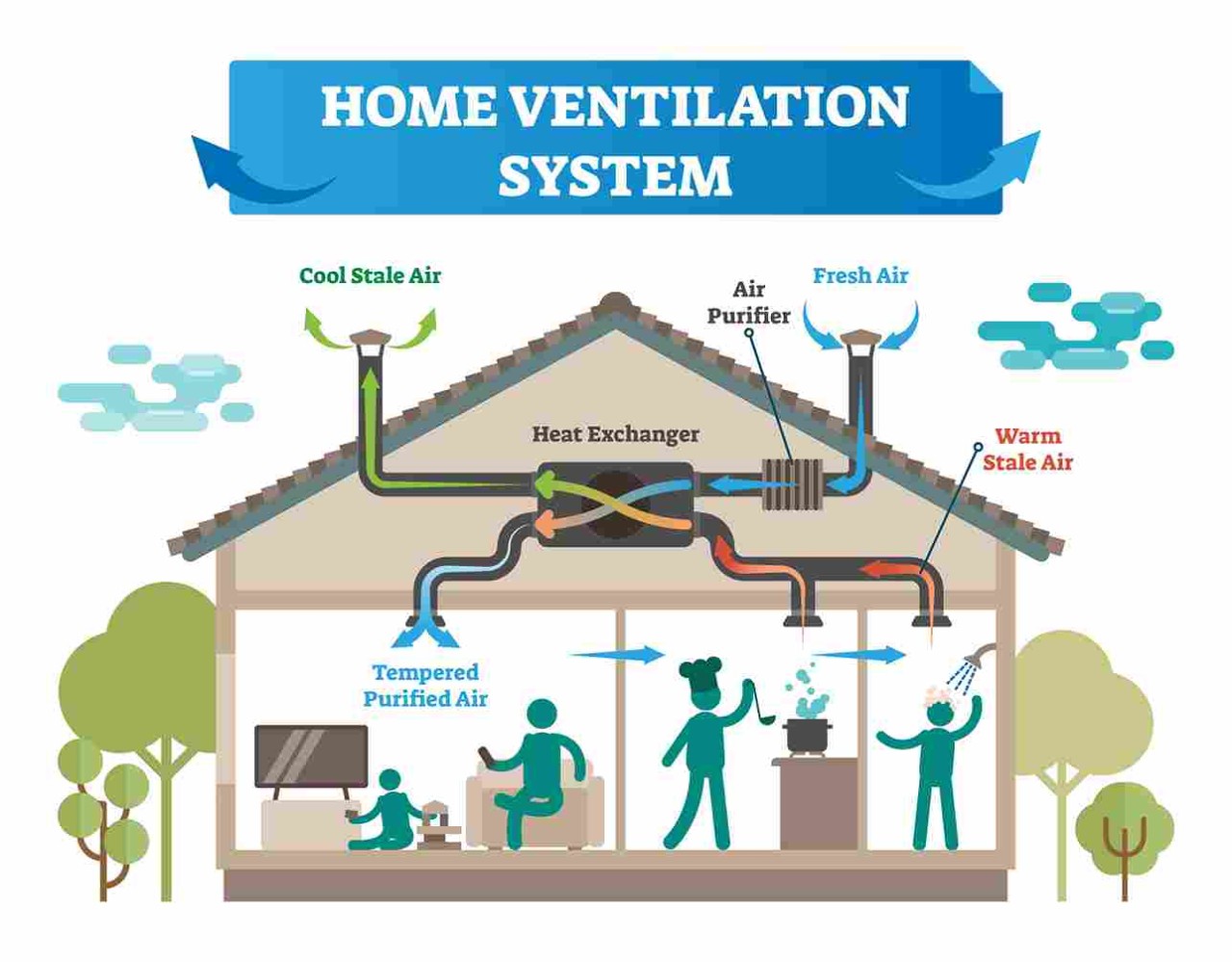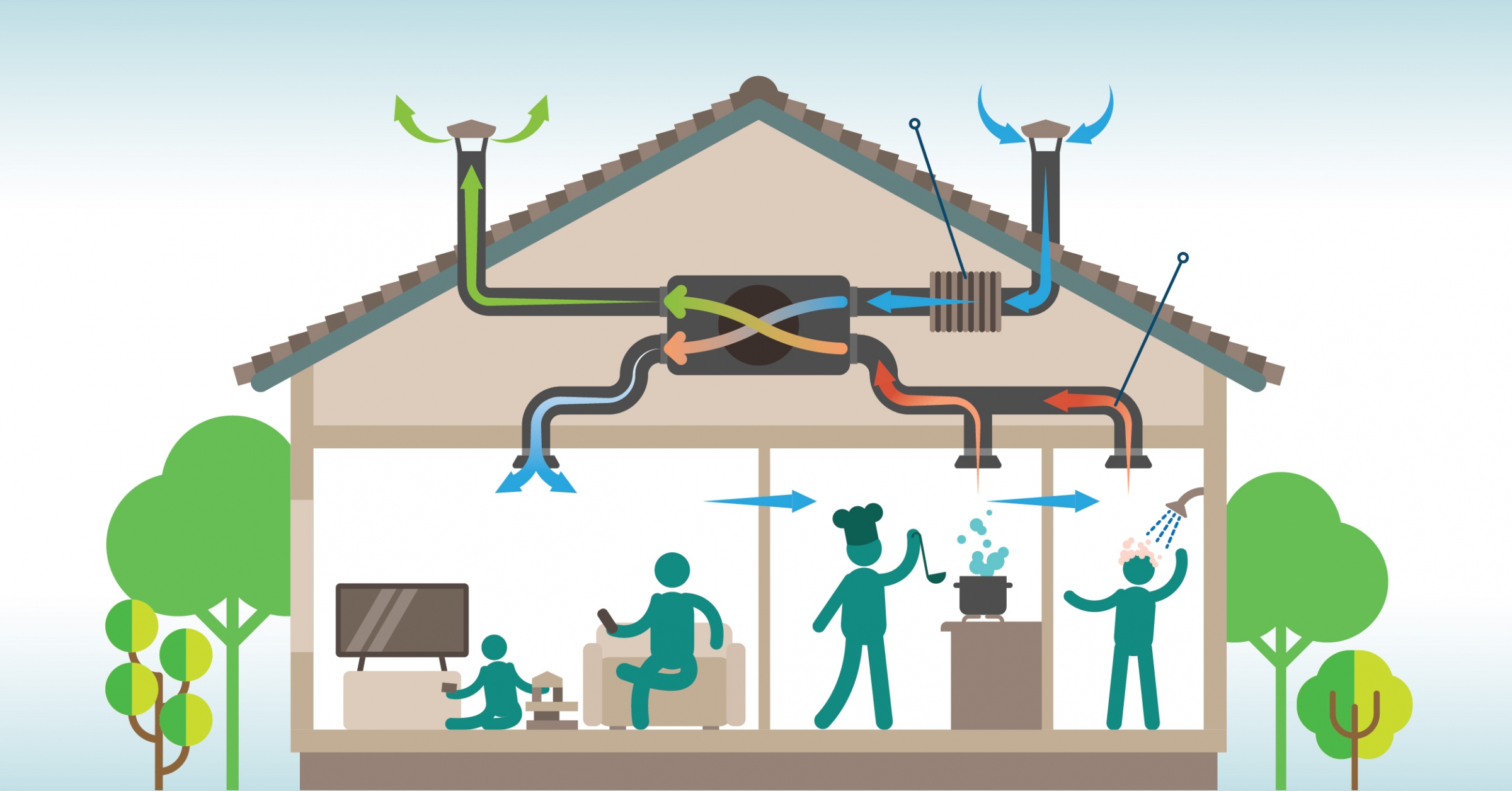Understanding the Relevance of Home Air Flow for a Healthier Living Atmosphere
Home ventilation plays an important function in preserving a healthy living setting. It facilitates the exchange of exterior and indoor air, which is essential for improving air top quality. Without correct air flow, homes can come to be reproducing premises for irritants and toxins. The repercussions of insufficient air circulation can be significant. This brings up the questions of exactly how homeowners can efficiently execute ventilation methods to safeguard their health and well-being. Recognizing these approaches is crucial.

The Fundamentals of Home Ventilation
Home air flow works as an essential component of indoor air high quality and convenience. It entails the procedure of exchanging stale interior air with fresh exterior air, consequently decreasing moisture and controlling temperature level. Proper ventilation systems can include natural methods, such as open windows and vents, as well as mechanical systems, such as exhaust fans and air exchangers. Effective home ventilation helps protect against issues like indoor mold growth and the build-up of unsafe particles. It also enhances total energy effectiveness, as well-ventilated rooms can maintain comfy temperatures with less reliance on home heating and cooling systems. Comprehending the basics of home air flow is crucial for property owners seeking to develop a much healthier living setting for themselves and their households.

Usual Sources of Indoor Air Pollution

Although several might not realize it, indoor air contamination can originate from various sources within a household. Typical contributors include unstable natural substances (VOCs) given off from paints, solvents, and cleaning products. Household devices, such as gas ovens and fire places, can release unsafe gases like carbon monoxide gas and nitrogen dioxide. Additionally, mold and mildew flourish in wet areas, launching spores that affect air high quality. Animal dander, dirt termites, and pollen can build up inside, further exacerbating air pollution degrees. Smoking cigarettes inside your home generates poisonous chemicals that remain in the air. Constructing materials, consisting of asbestos and formaldehyde, can off-gas damaging substances. Identifying these sources is important for keeping a healthier interior atmosphere and advertising efficient ventilation methods.
Health Effects of Poor Ventilation
Interior air pollution can have substantial health effects, especially when ventilation is poor. Poor air flow can cause the buildup of harmful contaminants, such as unpredictable organic compounds, mold, and particulate issue. This build-up may cause respiratory system issues, including bronchial asthma, allergic reactions, and chronic obstructive lung condition. People may experience symptoms like migraines, exhaustion, and irritation of the eyes, nose, and throat. Prone populations, such as children and the elderly, are at higher threat for severe health and wellness results. Lasting exposure to badly aerated environments can likewise add to more major problems, consisting of cardio diseases. Consequently, making certain correct ventilation is important for maintaining best site a healthy and balanced living atmosphere and lowering the threat of wellness difficulties associated with interior air pollution.
Effective Ventilation Methods for Your Home
Correct ventilation is vital for maintaining a healthy and balanced indoor atmosphere, and implementing reliable approaches can greatly enhance air high quality. Homeowners can begin by guaranteeing that exhaust fans are mounted in restrooms and cooking areas to eliminate excess moisture and smells. Opening home windows regularly enables fresh air to circulate, specifically during moderate weather. Furthermore, utilizing air purifiers with HEPA filters can help capture air-borne toxins. For homes with heating and cooling systems, keeping HVAC systems and transforming filters regularly is crucial for peak efficiency. Incorporating all-natural air flow techniques, such as cross-ventilation, can likewise boost airflow. Finally, securing any leakages in windows and doors protects against unwanted drafts, which can interfere with controlled air flow, ultimately leading to enhanced interior air top quality and convenience.
Preserving Ideal Air High Quality Year-Round
To keep optimal air top quality year-round, home owners must embrace a proactive approach to managing their indoor environment. On a regular basis monitoring indoor air high quality is critical; this includes monitoring for contaminants such as dust, mold and mildew, and unpredictable natural substances (VOCs) Implementing effective ventilation systems, such as exhaust fans and air purifiers, can substantially reduce airborne impurities. In addition, see this here regular maintenance of a/c systems warranties peak efficiency and air flow. Home owners need to additionally think about humidity degrees, as excessive moisture can lead to mold and mildew growth. Seasonal changes might demand modifications in air flow approaches to fit varying outdoor air top quality. By prioritizing these methods, house owners can produce a healthier living area, promoting overall wellness for all passengers throughout the year.
Regularly Asked Inquiries
Exactly How Can I Tell if My Home Requirements Better Air Flow?
To figure out if a home requires much better ventilation, one should observe indications such as relentless humidity, mold development, moldy smells, condensation on windows, or raised allergy signs, indicating inadequate air flow and possibly poor interior air quality.
What Are the Signs of Poor Indoor Air Top Quality?

Can Houseplants Improve Indoor Air High Quality Efficiently?
The efficiency of houseplants in boosting interior air quality is discussed. While some studies recommend they can absorb contaminants and create oxygen, their general influence may be marginal compared to proper air flow and air filtering systems.
How Often Should I Adjustment My Air Filters?
The frequency of air filter adjustments generally depends upon use and filter type. Normally, it is advised to replace filters every 3 months, though households with allergies or animals might call for more frequent modifications for perfect efficiency.
Exist Any Particular Ventilation Solutions for Allergic Reaction Sufferers?
Several air flow systems, such as HEPA-filtered systems, effectively reduce allergens in the air. Home Ventilation Melbourne. These systems trap dust, animal, and plant pollen dander, giving allergy sufferers with a cleaner, healthier indoor environment while handling air description high quality effectively
It helps with the exchange of exterior and interior air, which is vital for boosting air top quality. Home ventilation offers as a crucial part of interior air top quality and comfort. It includes the procedure of exchanging stale indoor air with fresh outside air, thus reducing humidity and managing temperature. Interior air contamination can have considerable health effects, particularly when ventilation is poor. Correct air flow is crucial for maintaining a healthy indoor atmosphere, and applying reliable techniques can considerably improve air high quality.